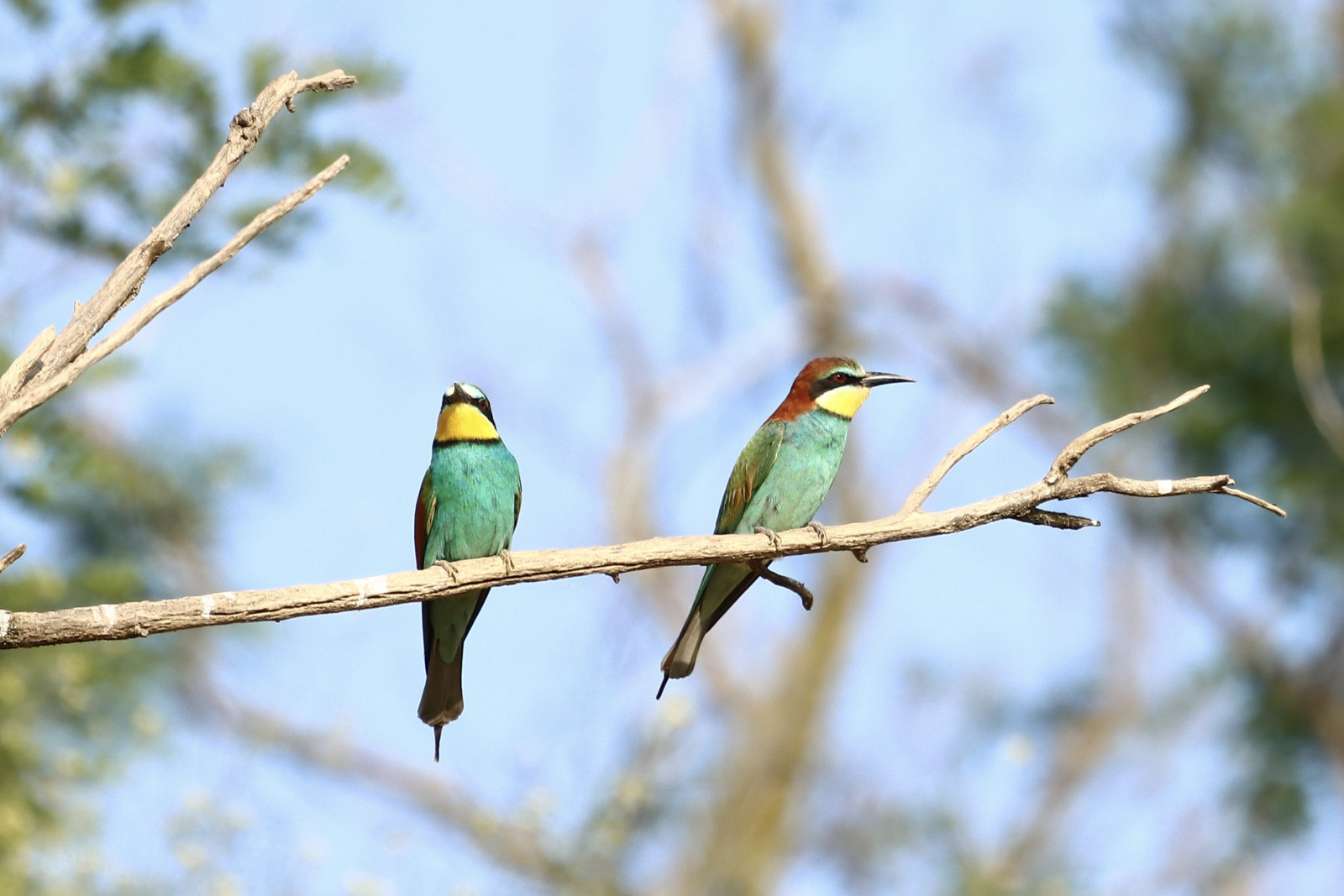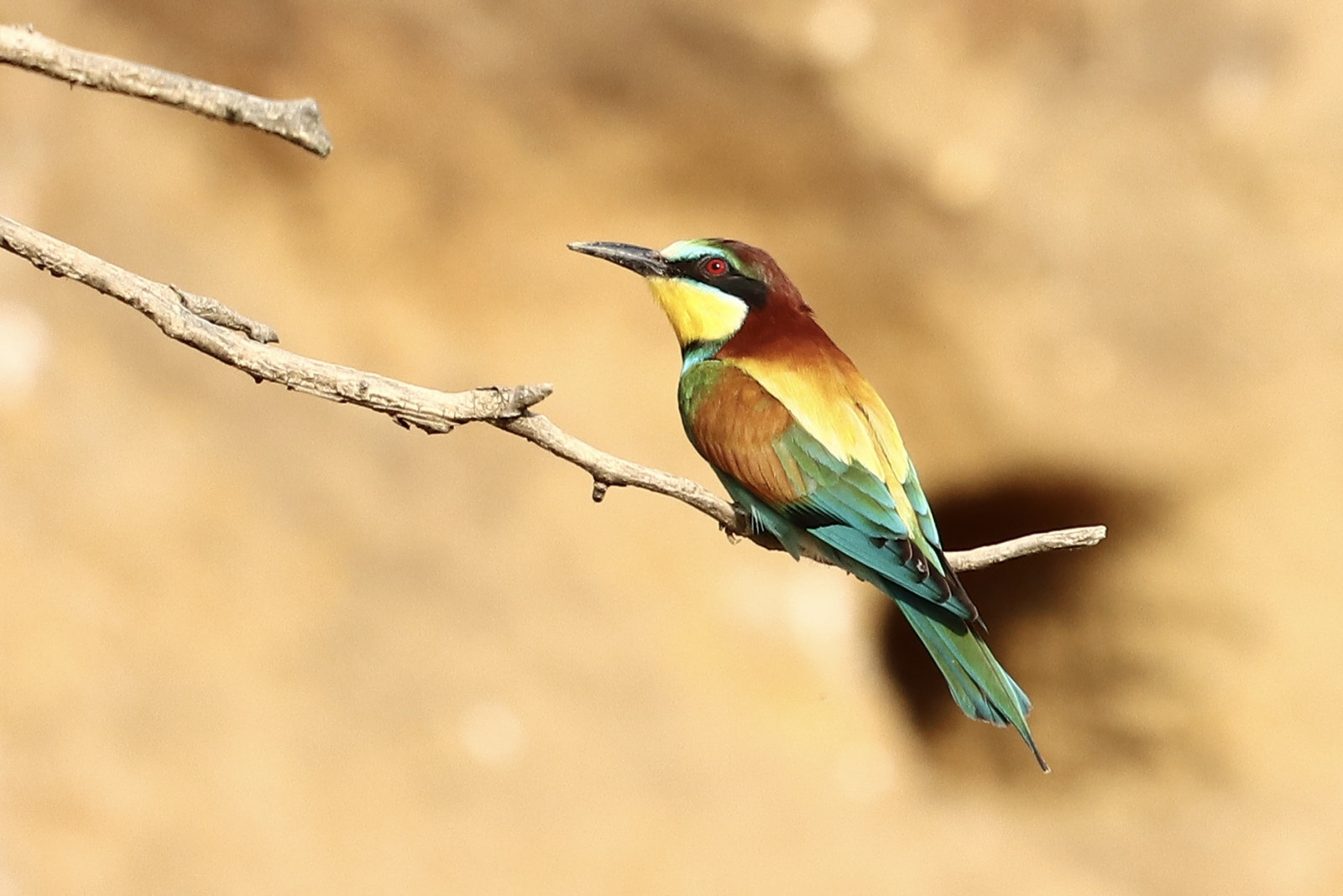Descrizione
The brilliantly colourful Gruccione are strictly protected and it is imperative that one use the spacious hide to the west of the breeding wall, so as not to disturb the birds’ breeding activity.
Other birds also make use of abandoned or seized Gruccione nesting burrows during the breeding season, and the loess wall can harbour a couple of surprises every year.
Dettagli
Accesso
The route begins at the eastern edge of Weiden am See and follows the by-road, immediately north of the main road, to Gols. After 300 m, take the track branching off to the left and leading slightly uphill. In spring and summer,Usignolo, Capinera, Fanello, and Verzellino can be heard singing from the many vineyards and little stands of trees and bushes. At the next fork in the road, at the latest, one should already be able to hear the calls of the Gruccione that are present here between mid-May and early August. So as not to disturb the birds of another breeding wall nearby, take the trail leading off to the right along the southern edge of a little patch of forest, which leads directly to the desired wall. The entrance to the hide is a few metres to the south. It is important to stay inside this hide for the duration of one’s visit to the colony. Aside from the many Gruccione, the breeding wall is also used by Gheppio, Storno, and Taccola, to name but a few. A pair of Civetta even breeds here in some years.
Terreno e habitat
Alberi e cespugli sparsiCaratteristiche dell’area
Sabbioso , AsciuttoPercorso ad anello
SiÈ utile un cannocchiale?
NoBuona stagione per il BW
Estate , PrimaveraMiglior periodo per visitare
Estate , PrimaveraPercorso
Strada asfaltata , Strada sterrataGrado di difficoltà del percorso a piedi
FacileModalità di accesso
A piedi , Bicicletta , MacchinaCapanno/torretta di osservazione
SiInformazioni aggiuntive
The first Gruccione were recorded in Austria towards the end of the 19th century. The first breeding sites were located along the unregulated banks of the Danube. Today, breeding sites in Austria are restricted to secondary breeding walls in sand and gravel pits, vineyards, and defiles. Since Gruccione dig a new burrow every year, smaller breeding walls can be used up fairly quickly. Knowing the locations of occupied breeding walls, avoiding (human) disturbance during the breeding period, and occasional maintenance of the walls are essential for a vital breeding population of the richly coloured birds.


